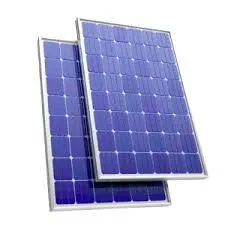
Solar System in Pakistan: A Complete Guide for 2025
1. Why Solar Energy is Booming in Pakistan
2. Types of Solar Systems in Pakistan
3. Solar Panel Prices in Pakistan (2025 Update)
4. How to Install a Solar System in Pakistan (Step-by-Step)
Step 5: Net Metering Application
5. Net Metering in Pakistan – What Is It?
6. Solar Maintenance & Cleaning in Pakistan
7. Best Solar Companies in Pakistan (2025)
As Pakistan grapples with rising electricity costs, frequent load-shedding, and growing environmental concerns, solar energy has rapidly emerged as a practical and profitable solution. With improved accessibility, reduced prices, and government-backed net metering initiatives, 2025 is the year to seriously consider switching to solar power.
This complete guide walks you through everything you need to know about the solar system in Pakistan from prices and system types to installation processes and government incentives.
1. Why Solar Energy is Booming in Pakistan
Load Shedding Crisis: Rural and urban areas alike suffer hours of daily power outages.
High Grid Electricity Prices: Energy tariffs have increased up to 40% since 2021.
Sunlight Abundance: Pakistan receives over 8 to 9 hours of sunlight daily, making it a solar-rich country.
Government Policies: Net metering and tax incentives are making solar more attractive.
2. Types of Solar Systems in Pakistan
Understanding the right type of solar system is critical to making a smart investment:
✅ On-Grid System
Connected to the national power grid
Allows net metering
Most cost-effective for urban households
Best For: Homes, offices, schools
✅ Off-Grid System
Independent from WAPDA or the national grid
Stores energy in batteries
Ideal for areas with no electricity access
Best For: Remote villages, farms, warehouses
✅ Hybrid System
Combines grid and battery backup
Offers full control and emergency storage
Slightly more expensive
Best For: Hospitals, commercial sites, 24/7 service businesses
3. Solar Panel Prices in Pakistan (2025 Update)
Pro Tip: Always check for Tier-1 solar panel brands like:
Longi Solar
JA Solar
Jinko
Canadian Solar
And use inverters from reliable brands like:
Growatt
Huawei
Solis
4. How to Install a Solar System in Pakistan (Step-by-Step)
Step 1: Site Survey
A solar technician visits your property to evaluate space, shade, and energy usage.
Step 2: Quotation & Proposal
You’ll receive a cost breakdown, system design, and estimated ROI.
Step 3: Equipment Procurement
Panel and inverter brands are selected based on your budget.
Step 4: Installation
Takes 2–4 days, depending on complexity.
Step 5: Net Metering Application
Installer applies for NEPRA/WAPDA approval for energy export credits.
5. Net Metering in Pakistan – What Is It?
Net metering allows you to sell excess electricity back to the grid. If your solar system generates more energy than you consume, it’s exported and the amount is deducted from your bill.
Eligibility Criteria:
Minimum 3kW system size
Must use on-grid or hybrid system
Licensed solar company required for application
Estimated ROI: 2–3 years
6. Solar Maintenance & Cleaning in Pakistan
Regular maintenance ensures your panels perform at maximum efficiency. In dusty cities like Lahore, Karachi, and Multan, panels should be cleaned every 15–30 days.
Tips:
Avoid cleaning during peak heat hours
Use soft water and no harsh chemicals
Hire professional solar cleaning services for safety and quality
7. Best Solar Companies in Pakistan (2025)
Choosing the right installer can make or break your experience. Here are top-rated solar companies to consider:
Reon Energy
Premier Energy
SkyElectric
PakSolar
Tesla Industries
Or, browse vetted and reviewed contractors on HOCMaterial.com.
8. Return on Investment (ROI) and Lifespan
Break-even point: 2.5 – 4 years depending on usage
Panel life: 25+ years
Inverter life: 10–12 years
Savings: Up to 90% on monthly bills
Conclusion
Switching to solar isn’t just an environmental choice it’s an economic upgrade. With a booming market, falling prices, and supportive policies, 2025 is the best year to invest in solar energy in Pakistan. Whether you live in a remote area or a bustling city, the power to change your energy future is now in your hands.





